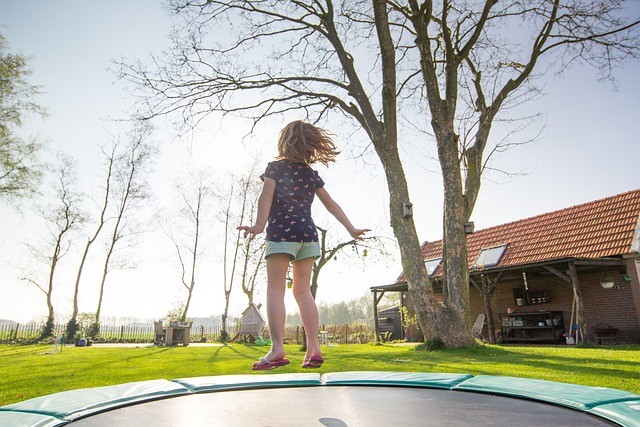Vuly Play
Trampolines are for Everyone – Even Kids with Disabilities and Special Needs
(Source: pixabay)
There’s a common misconception that trampolines are only for kids who have no disabilities or special conditions. But trampolines are designed for everyone to enjoy, and the joys of bouncing are available to all. This includes many kids with certain disabilities, physical impairments and special medical conditions.
In fact, a high-quality trampoline may provide even more benefits to kids with special needs than to those who are fully healthy and able. Not only do modern trampolines provide a safe and fun playground for kids with special needs, but they also make excellent tools for physical therapy and health improvement.
Here’s how they can help kids with disabilities and special needs:
1. Improve Fitness
Bouncing on trampolines may look physically demanding, but it’s actually much safer and easier on the body that most people think. Trampolining is a low-impact activity that’s great for light exercise and maintaining or improving physical fitness. Trampolines place less stress and impact on their joints compared to running or jogging, making it an ideal and fun exercise that can help develop muscles and improve fitness.
2. Build Stronger Bones
Trampolines help improve bone health in two main ways: getting more sun and fresh air outdoors and strengthening their bones through low-impact exercise. Outdoor trampolines ‘force’ kids to go outside and play, letting them create Vitamin D naturally through sun exposure during the day. Meanwhile, the light resistance and low impact rebound force from jumping on trampolines provides the stimulus for their bodies to keep their bones strong. Together, these features can help improve bone health and prevent bone loss.
3. Improve Posture and Balance
Trampolines provide a firm yet flexible platform that can help young kids improve their posture and balance. Light bouncing and rebounding can help kids tune in to their bodies, improving their coordination and dexterity in different ways. Trampolines can also help them improve their posture and balance, giving them more control of their bodies and helping them understand their physical limits and possibilities.
4. Brighten Moods
The joy of bouncing on a trampoline needs no explanation – there’s simply something fun and exciting about the act of jumping up and down. Not only does it help relieve stress, but the continuous act of jumping can also release endorphins that can boost morale and provide a jolt of energy. It also helps the body release dopamine, which can help kids feel more cheerful and alert. This makes a trampoline one of the most effective and playful tools for combating the effects of anxiety and improving impulse control.
5. Stimulate Senses
Aside from improving their sense of balance and coordination, trampolines also provide active sensory stimulation that can help kids with special needs – particularly those who have sensory disorders – to interpret physical and environmental stimuli more effectively. The rhythmic bouncing and physical sensations of jumping and falling, for example, can help kids with sensory disorders to align with their sensory systems and improve their motor skills. Sensory integration therapy has been shown to provide benefits to treating kids with autism, and this is something that trampolines can easily be used for.
A Playground for Everyone
Given all these benefits of trampolining, it’s easy to see how trampolines can have a such a positive impact on kids with special needs.
The great news is that today’s trampolines are safer and more functional than ever, making them easier to use for kids with disabilities or special needs. You’ll also find a variety of trampolines and trampoline accessories that can help you create the setup that would work best for different situations.



